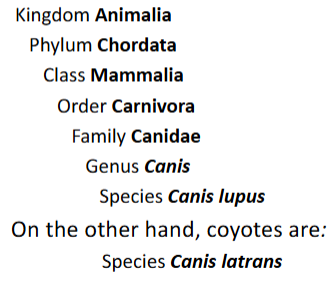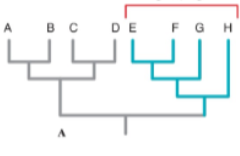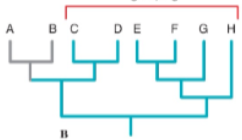Phylogeny
1/26
There's no tags or description
Looks like no tags are added yet.
Name | Mastery | Learn | Test | Matching | Spaced |
|---|
No study sessions yet.
27 Terms
Speciation is fundamental to what?
Cladogenesis - process and patters of evolution
Speciation involes
– 1 species > 2 (or more) species
– usually involves
geographical isolation
subsequent divergence
e.g., Darwin’s finches on Galapagos
= “allopatric speciation” - different country, isolated so it evolves
allopatric speciation
inferred from range maps showing largely non-overlapping ranges of species
• e.g., Slender salamanders (Batrachoseps) in California
Parapatric Speciation
evolution of new species in populations that are geographically adjacent, not separated by a physical barrier, but with limited gene flow and strong environmental gradients
Sympatric Speciation
– e.g., apple maggot fly?
– lays eggs on hawthorns and now apples too
– genetic differences among populations on hawthorns and apples
evolutionary process where new species arise from a single ancestral population while living in the same geographic area, meaning no physical barriers separate them
Adaptive Radiation
Many species evolve from a common ancestor, have very divergent lifestyles. – e.g.:
– e.g.:
• Darwin’s finches
• Cichlid fishes of African lakes
the diversification of a group of organisms into forms filling different ecological niches.
Linnean Hierarchy
Carl Linnaeus
Domain > Kingdom > Phylum > Class > Order > Family > Genus > Species
Dear King Phillip Came Over For Good Sex
Ex of linnean hierarchy - Wolves vs Coyotes

Binomial Nomenclature
The two parts are
1) Genus
2) species epithet
• Example: Canis lupus
Genus + species epithet
If names are handwritten what do you do? What about if they’re typed?
Underlined; italicized
Oldest currently used names date back to
to 10 th edition of Systema Naturae (1758)
Who determines what names are recognized?
International Commission on Zoological Nomenclature (ICZN)
What do you do to higher level names?
They are capitalized but not underline/italicized
Typological Species Concepts
“type specimen” needed to name a new species. Use one species and compare all others to it.
Biological Species Concept
Actually or potentially interbreeding populations
Phylogenetic Specis Concept
Smallest unit defined by common ancestry and distinct characters
Evolutionary Tree =
Phylogeny = Cladogram
An evolutionary tree shows patters of
Common ancestry and branching
A cladogram allows us to plot the evolution of _______.
Characters

Monophyletic group (clade) - an ancestor and all its descendants

Paraphyletic Group - an ancestor and some descendants
Monophyletic Groups are recognized by ______
Synapomorphies - shared derived characters.
What do Symplesiomorphies tell us about relationships?
Shared primitive characters tell us nothing.
What do homoplasies tell us about relationships?
Features evolved independently in two groups. Tell us nothing.
What data do you use to build phylogenies? What can this data be? What do we typically use?
Data on shared derived characters.
Morphological, behavioral, physiological, molecular characters.
DNA sequence data because there are more possible characters.
What do Tree-building algorithms do?
Sort through character matrix to choose the best possible tree.
Parsimonious
the principle that the simplest explanation, requiring the fewest evolutionary changes is the most likely to be correct